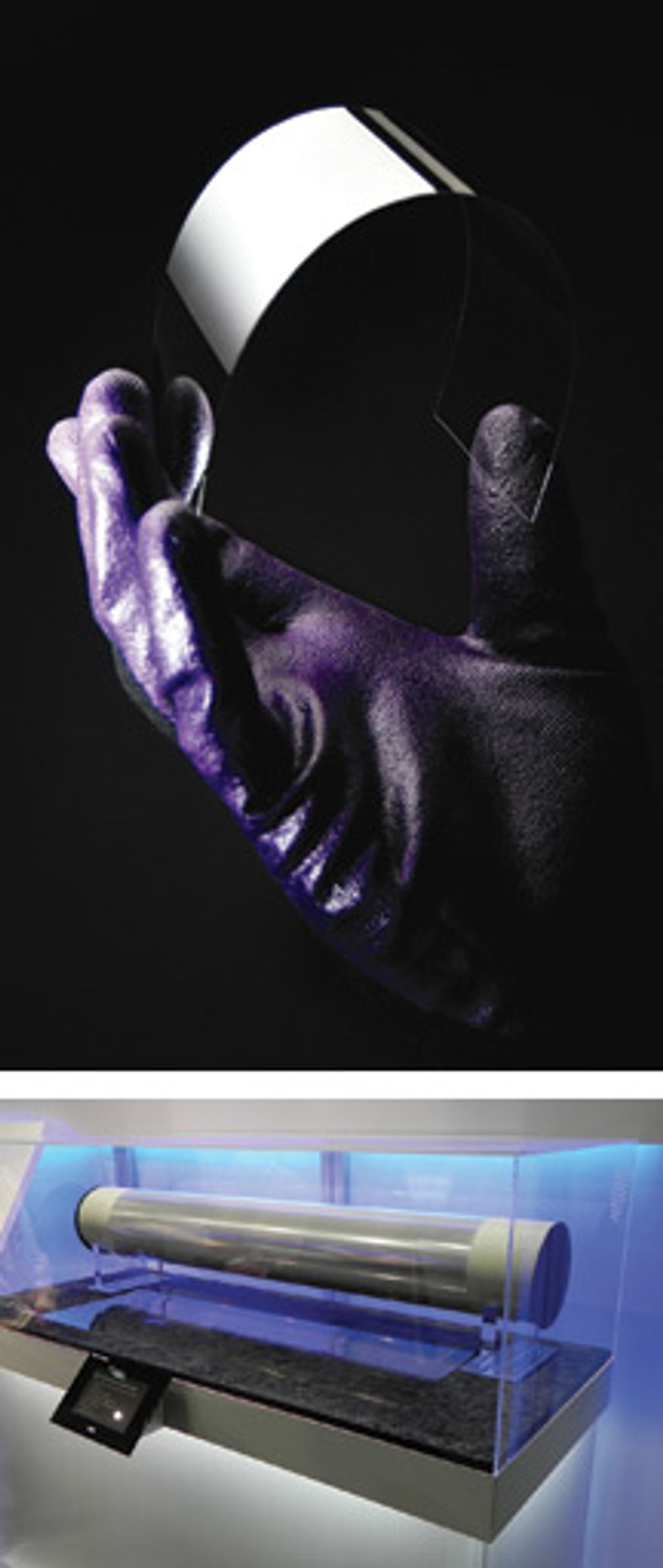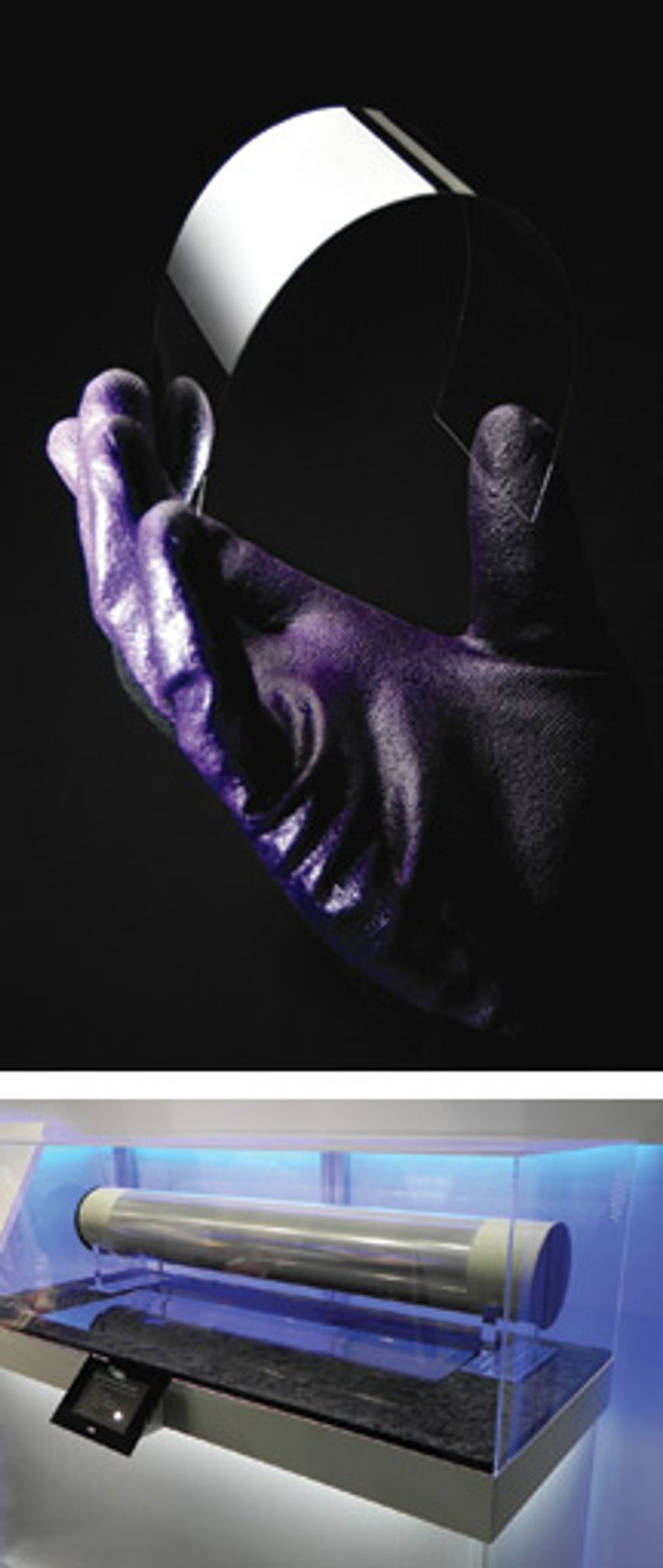The LCD is an antique technology by almost any measure. Liquid crystal material was first discovered in Austria in 1888, about 10 years before the invention of the cathode-ray tube. The first liquid crystal displays—in wristwatches—go back to the early 1970s. Today, we can make LCD flat-panel displays with diagonals of 70 inches or more. And yet we've hardly scratched the surface, so to speak, of what the technology can do.
Perhaps the hottest topic in large-panel displays is stereoscopic technology, commonly referred to as 3-D. Certainly, 3-D has been a hit in movie theaters, and because a Hollywood feature nowadays can make as much money on the small screen as the big one, the studios are eager to ride that success directly into the living room. HDTV makers are doing their best to accommodate them.
It's not that difficult to create a time-multiplexed stereoscopic display with LCD panels—the main requirement is the refresh rate, and many TVs already produce images at the necessary 120 hertz. Active-shutter glasses block the image for one eye and then the other in rapid sequence, so when the panel flashes left and right images, the viewer's brain will combine them into a 3-D scene. This has been the standard approach for 3-D TVs, but the active glasses have been expensive (US $100 or more per pair) and inconvenient when you have a bunch of friends over to watch Avatar.
This year's disruptive technology is a Film Patterned Retarder (FPR) developed by LG Display. FPR uses alternating horizontal stripes of polarizing film, with each stripe as tall as one row of pixels. This creates two interlaced images with opposite polarization, which can be viewed with the same inexpensive passive glasses used in cinemas. LG has managed to include this additional layer and align it precisely with the LCD panel and still competitively price its FPR television sets. (LG supplies the same panels to Vizio and presumably to Westinghouse Digital as well for some of their televisions.)
Prices for both active-glass technology and LG's FPR approach are falling rapidly, and manufacturers are quickly expanding 3-D support throughout their product lines, though not without some contention—the one is criticized for the expensive and heavy glasses, the other for cutting the display resolution in half; with FPR, each eye sees only half the pixels on the screen. Fortunately, a solution to this dilemma may be coming soon.
Samsung and RealD recently demonstrated a new approach that seems to offer the best of the active and passive designs. A second LCD panel is incorporated in the display with the sole function of reversing the polarization of the entire screen, to time-multiplex the left and right images. As a result, viewers can use inexpensive passive glasses to view the display, yet still receive the full resolution to each eye. The extra LCD layer may seem an expensive addition, but it can have a much simpler structure and does not need subpixels, color filters, or many of the other light-management films required by a traditional LCD HDTV. So it remains to be seen whether it can be produced at a competitive price.
While Samsung is adding layers, other manufacturers are looking to make LCD TVs thinner. When you ship millions of large flat-panel televisions around the world, small reductions in weight can add up to large savings in material and freight costs. Several new developments promise major gains—that is, losses—in weight.
One of the most interesting is roll-to-roll glass. Glass, with its superior uniformity and durability, has always been the substrate of preference for LCD panels. Today's batch processing uses rectangular sheets of "mother glass" substrates that go through various processing steps and then are cut into separate display panels. The largest substrates, used in Sharp's Gen 10 plant, are 2.88 by 3.13 meters. That's more than twice the area of a king-size mattress, but we may be approaching the limits of efficient batch processing of LCD panels.
Corning and Asahi Glass Co. have now separately developed 0.1-millimeter-thick glass, which is about as thick as a sheet of copy paper. Corning uses a proprietary fusion glass technology, while Asahi uses a more traditional float technique (in which liquid glass is poured onto a bath of molten metal). In either case, the resulting glass is so thin it can be rolled onto spools.
Spools of thinner glass make it possible to use roll-to-roll processing for some or all of the LCD production steps, thereby lowering costs. And with glass one-seventh the thickness of the 0.7-mm sheets in current panels, a typical 55-inch LCD TV would lose about 430 grams.
3M is taking a different approach to shedding weight—it has eliminated many of the materials required for LED edge lighting. Many manufacturers make their flat-panel televisions thinner by putting arrays of LEDs along the edge of the panel as backlights. But to distribute the light from the edges uniformly across the entire panel, a panoply of light-management materials are needed: light guides, collimating films, light-recovery layers, and diffusers. The new 3M Air Guide technology combines all these functions in a single film that is applied directly to the back of the LCD panel. An air cavity between the panel and the back of the display is backed by a reflective layer.
This new design can reportedly eliminate 90 percent of the light-management materials, resulting in a 3-kilogram reduction for a 55-inch LCD HDTV. It has other benefits as well. The light mixing is more effective, so fewer LEDs are needed—they can be spaced as far apart as 60 mm instead of the standard 12 mm without creating hot spots in the backlight. Or manufacturers can choose to use the normal spacing and thus increase reliability, because the failure of an individual LED won't affect the backlight uniformity. The mixing also makes it possible to achieve a desired color temperature with less expensive LEDs.
Because of these and other developments, LCD technology should maintain its dominant role in the display industry for years to come. For example, Sharp has announced that it is switching one of the production lines at its Gen 8 Kameyama LCD plant to use metal oxide for the active backplane instead of the traditional amorphous silicon (a-Si) layer. Sharp will use an indium gallium zinc oxide material that outperforms a-Si and approaches the lower power consumption and high resolution offered by polycrystalline silicon backplanes.
Other large-format display technologies, such as organic LEDs, will face increasingly tough competition, as LCD makers continue to increase performance while wringing out costs.
About the Author
Alfred Poor is a senior member of the Society for Information Display. At PC Magazine, he was a contributing editor for more than 20 years and became the publication's first lead analyst for business displays. In "LCDs' Bright Future", Poor explains three technological advances that will make TVs lighter and cheaper and reveals why he still is "fascinated by shiny, sparkly things."

